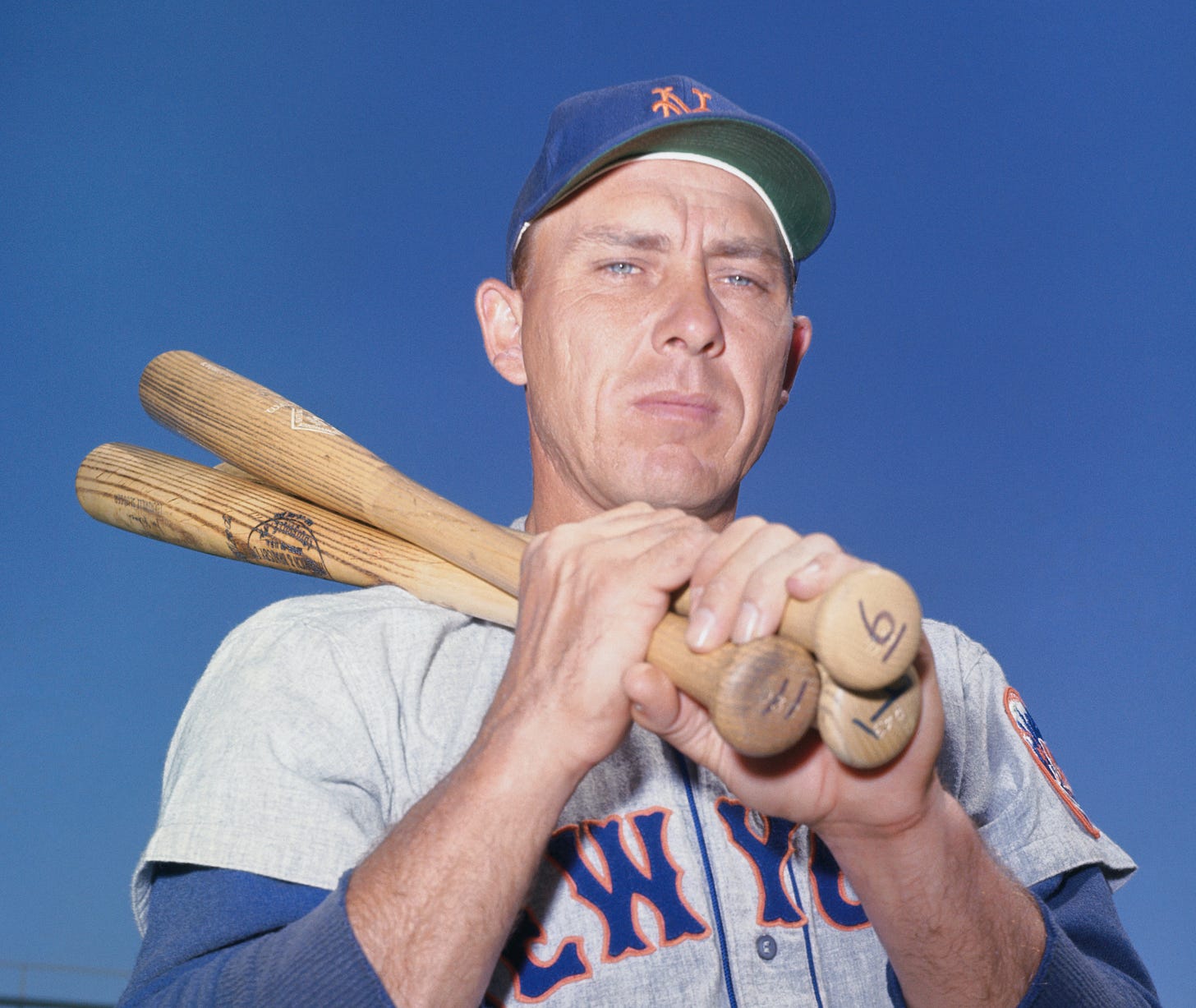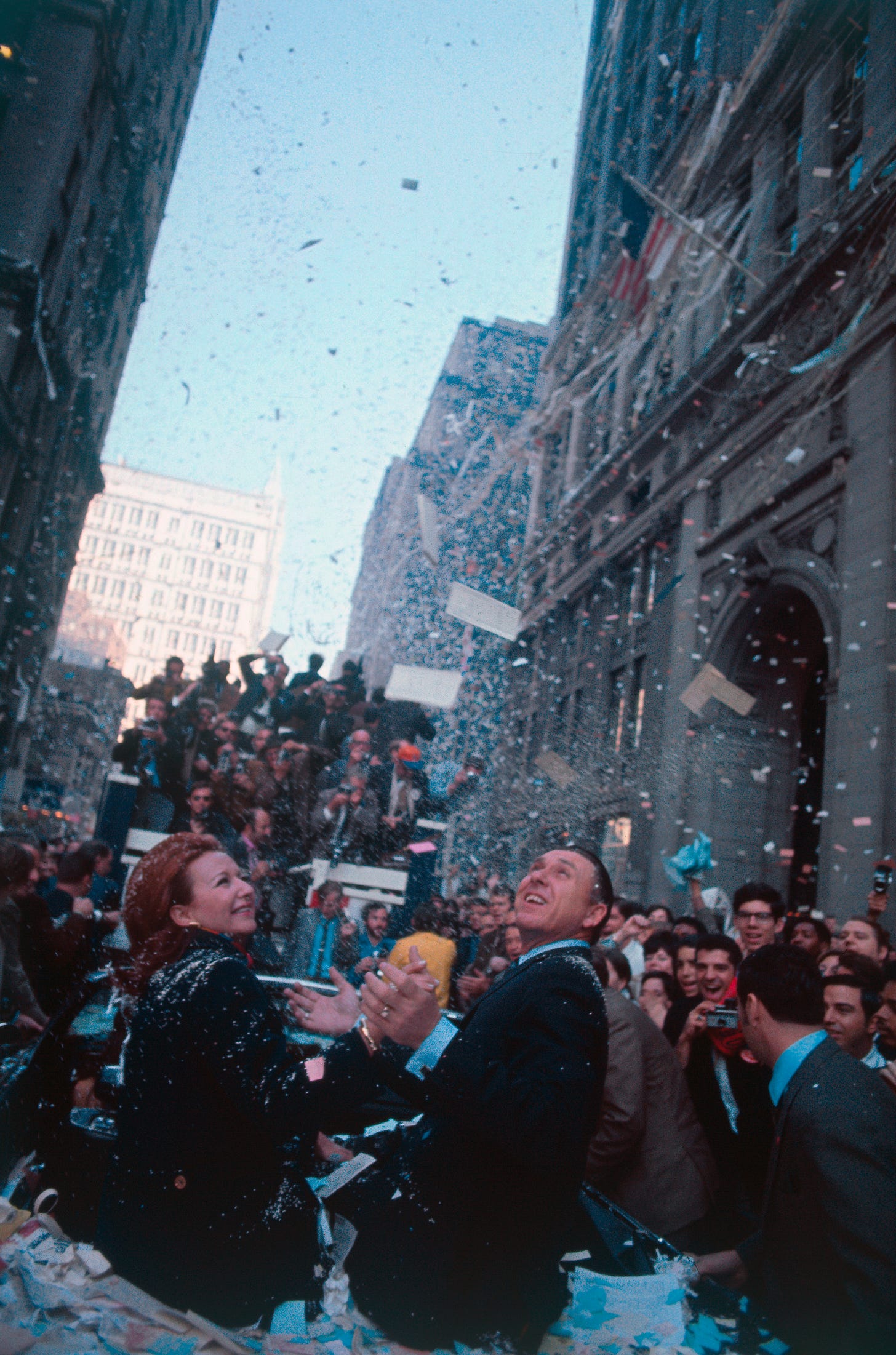Gil Hodges finally elected to the Hall of Fame
The New York baseball icon has been elected by the Golden Days Era Committee nearly 50 years after he died
Gil Hodges has finally received an honor he long deserved, being elected to the National Baseball Hall of Fame by the Golden Days Era committee.
A beloved Dodger and later, beloved Met, Hodges was an eight-time All-Star, won two championships as a player and one as a manger, and a three-time Gold Glove Award winner at first base. He spent the 1944-1945 seasons serving in the Marines during World War II and winning a Bronze Star. He finally made his mark with the Brooklyn Dodgers in 1949 when he belted 23 home runs, drove in 115, and posted a .285/.360/.453 line, earning the first of seven straight National League All-Star appearances.
His best seasons were from 1951-1955 when he slashed a .284/.380/.532 line and averaging 34 home runs and 112 RBI during that five-year stretch - his 172 home runs and 559 RBI were second only to teammate Duke Snider (174 and 585 respectively) in all of baseball during that span. His .912 OPS was ninth-best in baseball, and all of that culminated with Brooklyn’s first and only world championship in 1955 with the Dodgers defeating the Yankees in a thrilling seven-game subway series victory.
After going out to Los Angeles with the Dodgers after the 1957 season, Hodges rounded out his playing career as a part time player with the Mets from 1962-1963 before retiring in 1963 and starting his managing career that same season with the Washington Senators. He finished with 370 lifetime home runs and 1274 RBI and a 120 OPS+ over 18 big league seasons.
Among all qualified first baseman, Hodges led all of baseball with 310 home runs, 1001 RBI and was 14th with an .884 OPS and his 41.1 bWAR was 6th best between 1950 and 1959.
Hodges didn’t enjoy success over five years managing the Senators, going 321-444 in from 1963-1967 and never finishing higher than sixth place in the American League. But the Mets wanted to bring Hodges and cultural change to the club, so in 1967 they traded top pitching prospect Bill Denehy to Washington to procure Hodges’ services as the new manager of the Mets.
The Mets fortunes didn’t change all that much in 1968, although for the first time in their brief history the club finished higher than last place, in ninth with a 73-89 record. The tide was turning though thanks to the new culture Hodges had cultivated and the emergence of young star pitchers in Tom Seaver, Jerry Koosman, and Nolan Ryan.
Then, in 1969, leveraging regular platoons, and an inclusive culture with his calm yet demanding nature, Hodges helped create a miracle at Shea Stadium.
The Mets went 38-11 down the stretch of the season, overtaking the Cubs with 100 wins for their first National League East title, sweeping the Braves in the first National League Championship Series and shocking the world by shutting down the 110-win Orioles over five games for the franchise’s first world championship.
Hodges shockingly passed away from a heart attack in April, 1972, just days before the Mets were set to open their season against the Pirates at Shea Stadium. The Mets spiritual and figurative dugout leader - who had helped grow the franchise from lovable losers to a formidable and credible opponent in the National League - was gone. But his winning legacy and his place in Mets history as the driving force to evolve the Mets from lovable losers to a world champion has gone down as one of the greatest influences in baseball history.
The Mets retired Hodges’ number 14 on June 9, 1973 and was elected to the Mets Hall of Fame in 1982. He is the third winningest manager in club history with a 339-309 record, established between 1968-1971.
Hodges was always a sentimental pick for the Hall of Fame but could never seem to get the nod when eligible. Being overshadowed by the likes of Willie Mays, Duke Snider and Mickey Mantle in the 1950’s could’ve played a role. In addition, having never led the league in any major offensive category and finishing in the top ten in MVP voting just twice might have played a role in his absence from Cooperstown as well. In his first year of hall of fame eligibility, Hodges received just 24.1 percent of the vote, although his marked jumped to 48.3 percent in 1970, following the Mets championship season and 50 percent the year after. He slipped to 40.7 percent in 1972 although he improved to 57.4 percent following his death on the 1973 ballot. He couldn’t gain any momentum from there, however, and more and more his chances dwindled before falling off the ballot. But none of this diminishes Hodges’ impact on the city of New York and his influence on three championship clubs between the Dodgers and the Mets.
He remains one of the great New York sports icons of all time and has finally been given baseball’s greatest individual honor, almost 50 years after his death - a plaque in Cooperstown.





